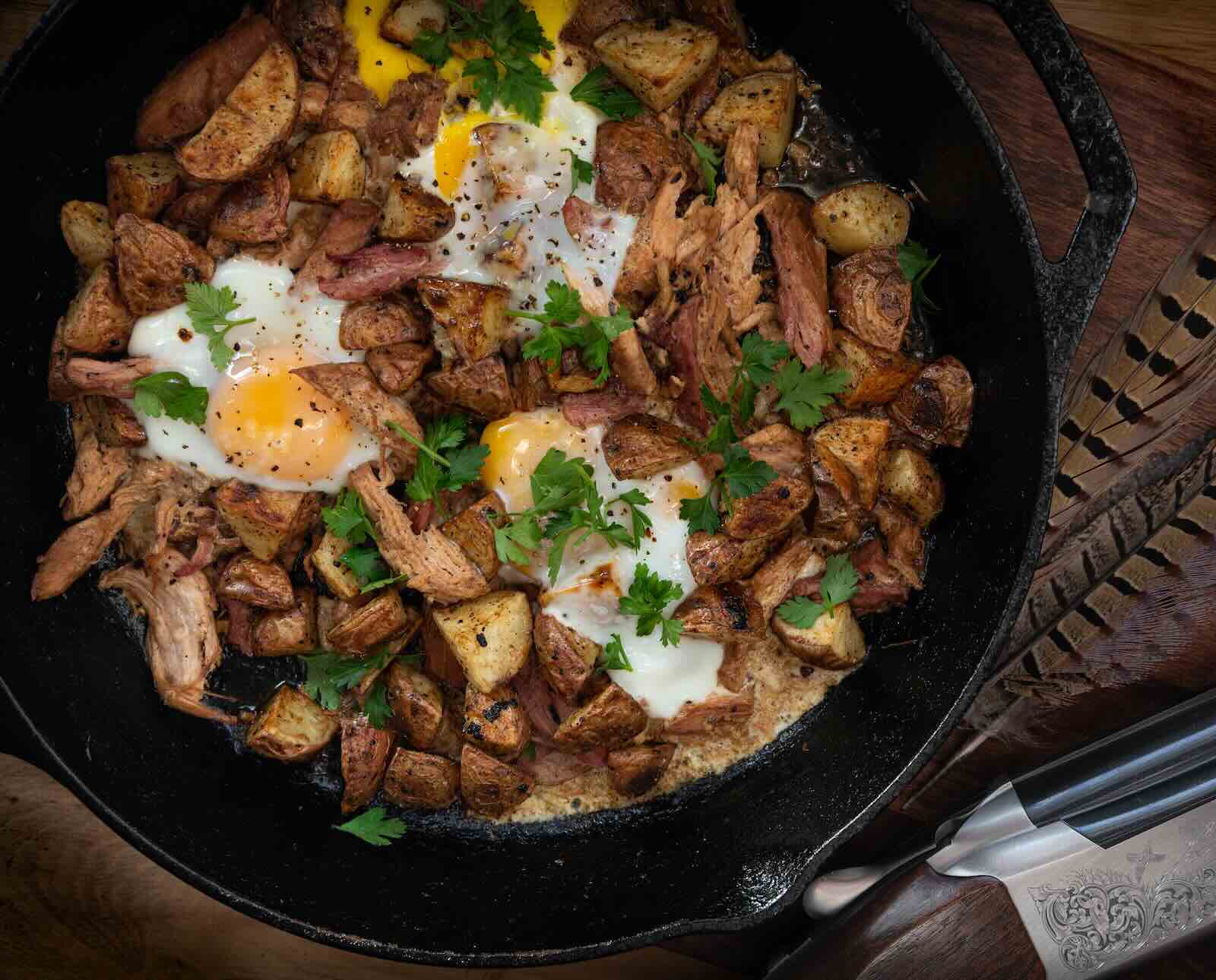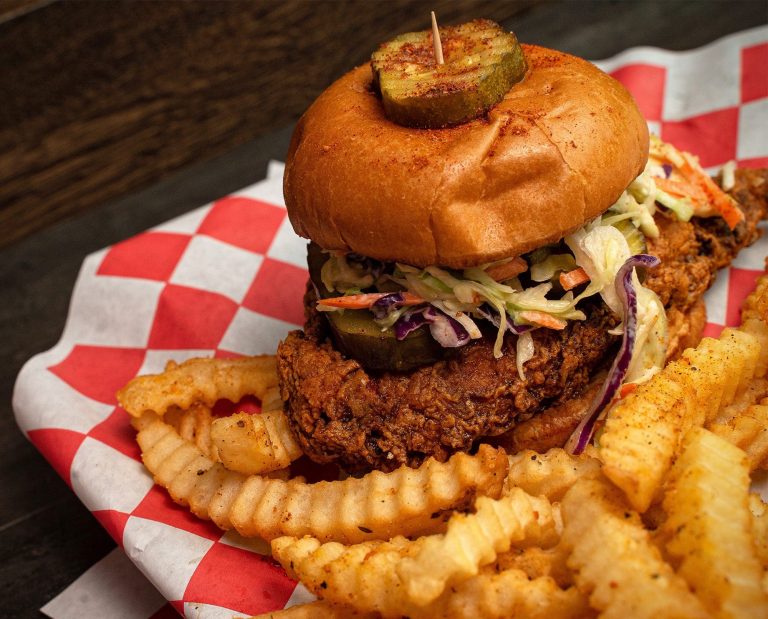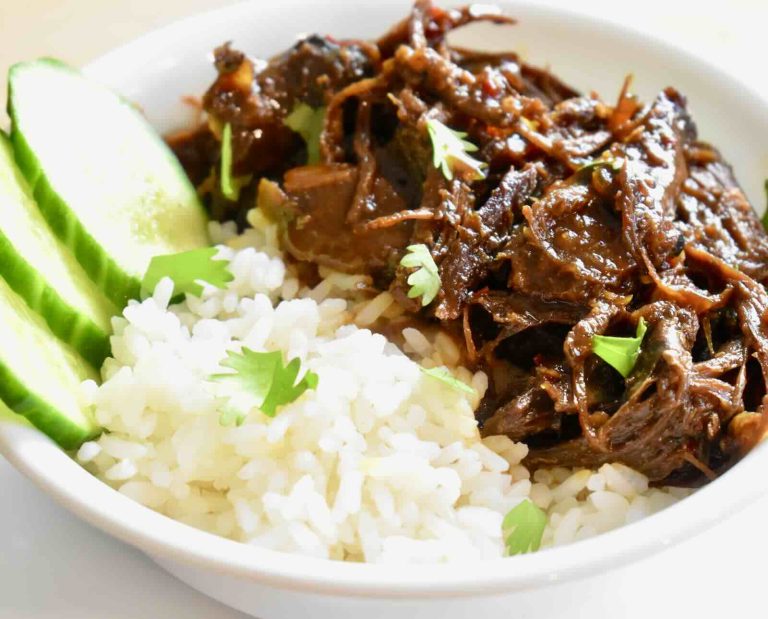Corned Pheasant and Hash

Celebrate St. Patrick’s day with an upland take on a classic holiday meal, substituting pheasant for the traditional corned beef
When prompted to think of a traditional St. Patrick’s Day dish, most people think of corned beef and cabbage or corned beef and hash. But what happens if we use upland birds instead of cattle in these dishes?
I incorporated a rooster pheasant in this recipe, but you can use any upland birds that add up to approximately one pound of meat. We will cure the meat in the same way one would with corned beef. In my experience, the pheasant was not as pink as I thought it would be upon removal. Nevertheless, it still had that distinct corned flavor, which is exactly what we are going for.
The sauce recipe calls for beer, preferably an Irish red ale. Make sure to save a couple for yourself if that’s your preferred way to celebrate St. Patrick’s Day!

Corned Pheasant and Hash
Ingredients
Method
- Quarter the pheasant into thighs and legs, wings, and breasts. The breasts can stay on the bone if you wish.
- Combine all brine ingredients in a large pot and bring to a low simmer. Stir until salt, cure, and sugar dissolve, then turn off the heat. Allow the brine to cool before adding the pheasant.
- When the brine is cool, add the pheasant to the pot. Cover the pot and refrigerate it for three days.
- After three days, start cooking by dicing a medium yellow onion. Remove the pheasant from the brine and pat it dry. Heat a thin layer of olive oil on medium-high in a large skillet. Add the onion and lightly salt and pepper it. Once the diced onion is seared, remove it and add a bit more olive oil.
- Sear the pheasant. Do not crowd the pan; only fill the skillet half full. Sear all sides of the pheasant to caramelize the meat. Once all sides are seared, add the onions back to the skillet, along with a can of Irish red beer (or similar) and a bit of chicken stock. You likely want a 2:1 ratio of beer to chicken stock. Make sure the pheasant is mostly covered in liquids, then cover the skillet with a lid.
- Reduce heat to low or whichever one of your stove settings creates barely a simmer. Monitor and continue to cover the pheasant with beer and stock as necessary. Barely simmer it for 4-5 hours, or until the meat falls off the bone.
- Once the pheasant meat falls off the bone, remove it and set it aside. Drain the cooking liquids through a sieve, saving one to two cups of the liquids.
- Hand-shred the pheasant meat, meaning remove the meat from the bones, and set it aside. Heat the oven to 400 F. Dice the potatoes, lightly coat them in olive oil, and roast them in a cast-iron skillet (or similar skillet), rotating as necessary until all sides are brown, likely 15-20 minutes.
- Once the potatoes are roasted, remove them and add them to a large mixing bowl with salted butter and Bearded Butchers’ Butter Blend or your favorite potato spice mix. Do not oversalt.
- Add both shredded pheasant and roasted potatoes back to the large skillet. Carefully crack four eggs overtop, and place the skillet in the oven until the eggs are cooked, approximately 3-5 minutes.
- To make the sauce, use leftover liquids and add half a tablespoon of stone-ground mustard for every cup of liquid. Stir thoroughly. If the liquids get cold, heat them back up in a saucepan.
- Use a spatula to portion out potatoes and pheasant with an egg overtop to serve. Then, add a bit of sauce. Enjoy!








